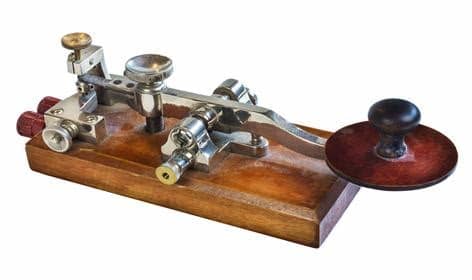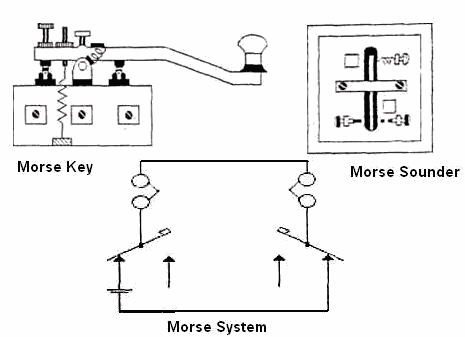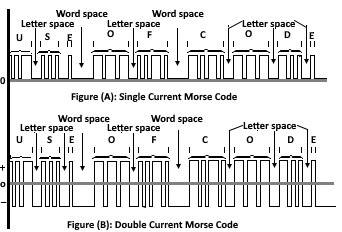Morse Code: A Simple and Effective Telegraph System
Morse code is a system of communication that uses short and long signals, also known as dots and dashes, to represent letters, numbers, punctuation, and special characters. It was invented by Samuel Morse and Alfred Vail in the 1830s and 1840s, and it became widely used for telegraphy, the transmission of messages over wires or radio waves.

How Does Morse Code Work?
Morse code is named in honor of Samuel F.B. Morse, an American who invented the telegraphic code. Morse code is based on a binary system, where each character is composed of a combination of two elements: a dot (.) and a dash (-). A dot is the shortest element, also called a dit, and it lasts for one unit of time. A dash is the longer element, also called dah, and it lasts for three units of time. The duration of a unit of time can vary depending on the speed of transmission, but it is usually about one-fourth of a second.
The spacing between the elements and the characters is also important for decoding the message. A space equal to one unit of time is used to separate the elements within a character. A space equal to three units of time is used to separate the characters within a word. A space equal to seven units of time is used to separate the words within a sentence.
For example, the word “HELLO” in Morse code is:
.... . .-.. .-.. ---
The dots and dashes are separated by one unit of time, the letters are separated by three units of time, and the word is followed by seven units of time before the next word.
A dot length = l/4th of a second.
A dash length = 3 dots in length.
Spacing between elements of a character = 1 dot length.
Spacing between characters of a word = 3 dots in length.
Spacing between the words = 7 dots in length.
The International Morse Codes for alphabets and numerals are given in table
| Char. | Code | Char. | Code | No. | Code |
|---|---|---|---|---|---|
| A | .- | N | -. | 1 | .---- |
| B | -... | O | --- | 2 | ..--- |
| C | -.-. | P | .--. | 3 | ...-- |
| D | -.. | Q | --.- | 4 | ....- |
| E | . | R | .-. | 5 | ..... |
| F | ..-. | S | ... | 6 | -.... |
| I | .. | T | ...- | 7 | --... |
| G | --. | U | ..- | 8 | ---.. |
| H | .... | V | ...- | 9 | ----. |
| J | .--- | W | .-- | 0 | ----- |
| K | -.- | X | -..- | ||
| L | .-.. | Y | -.-- | ||
| M | -- | Z | --.. |
Morse code Telegraph System
The Morse code telegraph system is a simple electric circuit consisting of the following components:
A battery:
which acts as a source of electrical energy in the circuit.
Morse key:
It is a manual key and acts as a switch to open and close the circuit. Thus causing pulses of current to flow on the line. When the operator starts opening and closing of the key. The transmission of information and encoding starts at the same time
Acts as a medium for the transmission of information between the two stations. The dots and dashes flow on the line in the form of electrical energy and are carried instantly through the wires from the transmitter to the receiver.
Receiver:
The receiver used is called a sounder because it produces a click-like sound. The receiver consists of an electromagnet and a movable armature. When a pulse of current passes through the electromagnet, it attracts the armature, and a click is produced. When the pulsed stops, the armature returns to its normal position with the help of a spring and again makes a click. The time between the clicks represents a dot or a dash. These clicks are heard by an operator and are decoded into messages in written form by him.
The Morse code telegraph system is illustrated in the figure.

Single and Double Current Morse Code System
The Morse code system may be either single current or double current. In the single-current system, a single battery is used. The current on the line flows only in one direction. There is a current on the line when a dot or dash is transmitted and no current when neither a dot nor dash is transmitted. The advantage of a single current system is low power consumption. However, the flow of current is slower and thus is a disadvantage.
In the double current system, two batteries of opposite polarities are used. There is always current on the line, which may be either positive or negative. For a dot or dash, the current on the line is positive while for space it is negative. The double current system is more sensitive and speedier than the single current system.

What Are the Advantages of Morse Code?
Morse code has several advantages over other forms of communication, especially in situations where voice or text communication is not possible or reliable. Some of these advantages are:
- It is simple and easy to learn. Anyone can learn the basic alphabet and numbers in Morse code in a few hours or days.
- It is efficient and concise. Morse code can transmit information with fewer symbols and less bandwidth than other codes or languages.
- It is versatile and adaptable. Morse code can be transmitted by various means, such as sound, light, electricity, radio waves, or even physical gestures. It can also be received by various devices, such as telegraphs, radios, computers, or even smartphones.
- It is robust and reliable. Morse code can overcome noise and interference that may affect other forms of communication. It can also be encrypted or disguised to prevent unauthorized access or detection.
What Are Some Applications of Morse Code?
Morse code has been used for various purposes throughout history and even today. Some of these applications are:
- Military communication. Morse code was widely used by the military forces during the World Wars and the Cold War for sending secret messages, coordinating operations, and identifying allies and enemies.
- Maritime communication. Morse code was also used by ships and coast guards for navigation, distress signals, and safety messages. The most famous distress signal in Morse code is SOS (
... --- ...), which stands for “save our souls”. - Amateur radio. Morse code is still popular among amateur radio operators, also known as hams, who use it for hobby, education, or emergency communication. Morse code is also required for some radio licenses and certifications.
- Accessibility and assistive technology. Morse code can also help people with disabilities or special needs to communicate or access technology. For example, some devices can convert Morse code input from switches or buttons into speech or text output. Some apps can also teach Morse code to people who are deaf or hard of hearing.
How Can You Learn Morse Code?
If you want to learn Morse code, there are many resources and tools available online or offline. Some of these are:
- Online courses and tutorials. There are many websites that offer free or paid courses and tutorials on Morse code. You can learn the basics, practice your skills, and test your knowledge at your own pace.
- Apps and games. There are also many apps and games that can help you learn Morse code in a fun and interactive way. You can use your smartphone or tablet to listen to or generate Morse code signals, play quizzes or puzzles, or challenge yourself with different levels of difficulty.
- Books and guides. There are also many books and guides that can teach you Morse code in a comprehensive and systematic way. You can find them in libraries, bookstores, or online platforms.
- Flashcards and charts. You can also use flashcards or charts to memorize the Morse code symbols and their meanings. You can make your own flashcards or charts, or you can download them from the internet.
